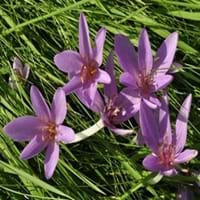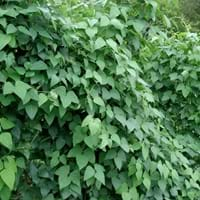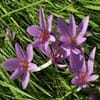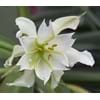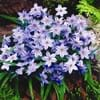Life Span
Perennial
Annual
Type
Bulb or Corm or Tuber
Vegetable
Origin
Hybrid origin
Central America, South America
Types
boissieri , cupanii , hungaricum , kesselringii
Willow Leaf, Sieva Lima, Dixie Speckled
Number of Varieties
Not Available
Habitat
Temperate Regions
Humid climates, Subtropical climates, Warmer regions
USDA Hardiness Zone
Not Available
6-11
AHS Heat Zone
Not Available
Not Available
Sunset Zone
21,22
Not Available
Habit
Clump-Forming
Vining/Climbing
Minimum Width
Not Available
Flower Color
Purple, Violet
White, Ivory
Flower Color Modifier
Bicolor
Bicolor
Fruit Color
Not Available
Green
Leaf Color in Spring
Green
Green
Leaf Color in Summer
Light Green
Green
Leaf Color in Fall
Several shades of Green
Green
Leaf Color in Winter
Light Green
Green
Leaf Shape
Long Linear
Willow-shaped
Plant Season
Spring, Fall
Not Available
Sunlight
Full Sun, Partial Sun
Full Sun
Type of Soil
Loam
Loam, Sand
The pH of Soil
Acidic, Neutral
Acidic, Neutral, Alkaline
Soil Drainage
Well drained
Well drained
Bloom Time
Late Summer, Early Fall
Indeterminate
Tolerances
Drought
Drought
Where to Plant?
Ground
Container, Ground, Pot
How to Plant?
Divison, From bulbs, Seedlings
Seedlings
Plant Maintenance
Medium
High
Watering Requirements
Keep ground moist
Allow to dry out slightly between watering, Do Not over Water, Requires regular watering
In Summer
Lots of watering
Not so frequently
In Spring
Moderate
Alternate Days
In Winter
Average Water
Drought Tolerant
Soil pH
Acidic, Neutral
Acidic, Neutral, Alkaline
Soil Type
Loam
Loam, Sand
Soil Drainage Capacity
Well drained
Well drained
Sun Exposure
Full Sun, Partial Sun
Full Sun
Pruning
no pruning required
Prune to control growth
Fertilizers
All-Purpose Liquid Fertilizer
organic fertlizers
Pests and Diseases
Dry root rot, Pest Free
Aphids, Armyworm, Bean rust, Bean weevils, Corn earworm, Cucumber beetles, Curly top, Damping off, Darkling beetles, Earwigs, Fusarium root rot, Grasshoppers, Leafhoppers, Loopers, Lycaenid pod borers, Lygus bugs, Mosaic viruses, Nematodes, Powdery mildew, Saltmarsh caterpillar, Seedcorn maggot, Slugs, Snails, Spider mites, Stink bugs, Thripes, White mold, Whiteflies
Plant Tolerance
Drought
Drought
Flowers
Showy
Insignificant
Flower Petal Number
Single
Single
Fragrant Flower
Yes
Not Available
Fragrant Fruit
No
Not Available
Fragrant Leaf
No
Not Available
Fragrant Bark/Stem
No
Not Available
Showy Bark
No
Not Available
Foliage Texture
Coarse
Medium
Foliage Sheen
Glossy
Matte
Self-Sowing
No
Not Available
Attracts
Whiteflies
Not Available
Allergy
Poisonous to grazing animals
Not Available
Aesthetic Uses
along a porch, deck or patio, Borders, Mixed Border, small hedge
Not Used For Aesthetic Purpose
Beauty Benefits
No Beauty Benefits
Not Available
Environmental Uses
Air purification
Not Available
Medicinal Uses
anti rheumatic, cathartic
cholesterol-lowering, constipation, Digestive disorders, Fiber, Heart problems
Part of Plant Used
Root
Seeds
Other Uses
Showy Purposes
Used As Food
Used As Indoor Plant
No
No
Used As Outdoor Plant
Yes
Yes
Garden Design
Container, Cutflower, Foundation, Lawns and Turf, Mixed Border
Edible, Herb, Vegetable
Botanical Name
COLCHICUM 'Lilac Wonder'
PHASEOLUS lunatus
Common Name
Hybrid Autumn Crocus, Hybrid Meadow Saffron
Butter Bean, Lima Bean
In Hindi
meadow saffron
सेम फली
In German
Herbstzeitlose
Limabohne
In French
Colchique d'automne
Haricot de Lima
In Spanish
Estado de conservación
Haba
In Greek
meadow saffron
Γίγαντας
In Portuguese
Colchicum autumnale
feijão-Lima
In Polish
Colchicum autumnale
Lima Bean
In Latin
autumnale
Lima Bean
Phylum
Tracheophyta
Tracheophyta
Class
Magnoliopsida
Magnoliopsida
Family
Liliaceae
Fabaceae
Genus
Colchicum
Phaseolus
Clade
Angiosperms, Monocots
Angiosperms, Eudicots, Rosids
Tribe
Not Available
Phaseoleae
Subfamily
Not Available
Faboideae
Number of Species
Not Available
Not Available
Difference Between Meadow Saffron and Lima Bean
If you are confused whether Meadow Saffron or Lima Bean are same, here are some features about those plants to help you choose better. Many people think that these two plants have the same characteristics, but one can see Meadow Saffron and Lima Bean Information and learn more about it. Fertilizers required for proper growth of Meadow Saffron are All-Purpose Liquid Fertilizer, whereas for Lima Bean fertilizers required are organic fertlizers. Hence, one should know the basic difference between Meadow Saffron and Lima Bean if you are planning to have them in your garden to enhance its beauty.
<
Flowering PlantsImportance of Meadow Saffron and Lima Bean
Want to have the most appropriate plant for your garden? You might want to know the importance of Meadow Saffron and Lima Bean. Basically, these two plants vary in many aspects. Compare Meadow Saffron and Lima Bean as they differ in many characteristics such as their life, care, benefits, facts, etc. Every gardener must at least have the slightest clue about the plants he wants to plant in his garden. Compare their benefits, which differ in many ways like facts and uses. The medicinal use of Meadow Saffron is anti rheumatic and cathartic whereas of Lima Bean is cholesterol-lowering, constipation, Digestive disorders, Fiber and Heart problems. Meadow Saffron has beauty benefits as follows: No Beauty Benefits while Lima Bean has beauty benefits as follows: No Beauty Benefits.
Compare Facts of Meadow Saffron vs Lima Bean
How to choose the best garden plant for your garden depending upon its facts? Here garden plant comparison will help you to solve this query. Compare the facts of Meadow Saffron vs Lima Bean and know which one to choose. As garden plants have benefits and other uses, allergy is also a major drawback of plants for some people. Allergic reactions of Meadow Saffron are Poisonous to grazing animals whereas of Lima Bean have Not Available respectively. Having a fruit bearing plant in your garden can be a plus point of your garden. Meadow Saffron has no showy fruits and Lima Bean has no showy fruits. Also Meadow Saffron is not flowering and Lima Bean is not flowering . You can compare Meadow Saffron and Lima Bean facts and facts of other plants too.
